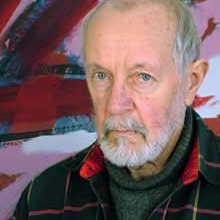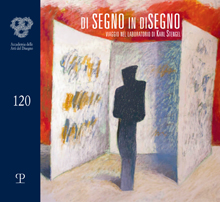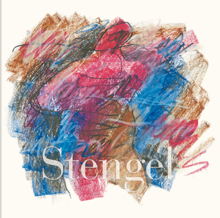Ricerca Veloce
Ricerca Avanzata

Karl Stengel
Karl Stengel, nato nel 1925 in Ungheria, sulle rive del
Danubio, avverte sin dall’infanzia l’impulso di “dover” disegnare. Nei suoi disegni,
così come nei suoi dipinti, affiorano prepotentemente, sia in forma figurativa
che astratta, le passioni e le sofferenze umane. Sentimenti che sono
testimonianza di esperienze vissute in prima persona da Stengel, come gli anni
della prigionia in Russia durante la guerra e poi l’arrivo dei carri armati
sovietici in Ungheria nel 1956. Anche la letteratura e la musica hanno sempre
ispirato il suo lavoro. Karl dipingeva sempre ascoltando musica nel suo studio,
tanto da fargli dedicare alcune opere a un compositore o esecutore. Il
parallelo tra il compositore e l’artista era così naturale per Karl che ha
usato proprio questo paragone per parlare del rapporto tra l’artista e
l’osservatore delle sue opere:
“Ti è forse mai capitato di sentir chiedere a un musicista che cosa volesse
dire un suo lavoro? Soltanto un pittore deve rispondere a questa domanda,
perché la gente è abituata da millenni a vedere su un quadro qualcosa
riconoscibile, comprensibile. Il pubblico semplicemente fino ad ora non ha
afferrato lo sviluppo della pittura moderna – ci vorranno ancora generazioni
prima che smetta di fare quella domanda.”
Karl Stengel si è spento, nella sua amata campagna toscana, il 25 giugno 2017.
Karl Stengel was born in 1925 in Neusatz, when the Austro-Hungarian Empire was crumbling. He was already passionate about drawing in his childhood and was also very gifted at sport. Stengel was a Russian prisoner of war during the Second World War and after this, he was unable to pursue his love of sport. However, his passion for drawing does accompany him in the Soviet lager and when an officer sees him drawing with a piece of coal on a sack of cement, he is asked to do his portrait and to paint other officers too. This is his "first exhibition". Back in Hungary it is difficult for the son of a bourgeois family to enter the art academy and it is difficult to express one's creativity and individuality when socialist realism imposes itself in every form of expression. In 1956, when Soviet tanks arrived, he fled to Munich, Germany, where he remains for most of his life. It is here in Munich where he attends the Academy of Art and later becomes an art teacher. He dedicated his whole life to painting and drawing and also spent time in Tuscany, where he died on 25 June 2017.
Vedi anche...
Di segno in disegno
- € 19,00
- € 20,00
Karl Stengel
- € 30,60
- € 36,00

